Prime Minister of South Africa facts for kids
Quick facts for kids Prime Minister of South Africa |
|
|---|---|
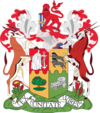
Coat of Arms of South Africa
|
|
| Style | The Right Honourable (until 1961) |
| Appointer | Governor-General of South Africa (1910–1961) State President of South Africa (1961–1984) |
| Term length | Whilst commanding the confidence of the House of Assembly |
| Formation | 31 May 1910 |
| First holder | Louis Botha |
| Final holder | Pieter Willem Botha |
| Abolished | 14 September 1984 |
| Succession | Executive State President of South Africa |
The prime minister of South Africa (Afrikaans: Eerste Minister van Suid-Afrika) was the main leader of the government in South Africa. This important role existed from 1910 until 1984.
Contents
Understanding the Prime Minister's Role
The job of Prime Minister began in 1910. This was when the Union of South Africa was formed. The head of state chose the Prime Minister. Before 1961, this was the governor-general. After 1961, when South Africa became a republic, it was the state president.
The Prime Minister was usually the leader of the biggest political party. This party would have the most seats in the House of Assembly. The governor-general or state president almost always followed the Prime Minister's advice. This made the Prime Minister the country's most powerful political figure. They were like the chief executive, similar to the British Prime Minister.
The very first Prime Minister was Louis Botha. He was a famous general from the Second Boer War.
The role of Prime Minister ended in 1984. A new constitution was put in place. This new law combined the jobs of Prime Minister and State President. The State President then gained executive powers. P. W. Botha, who was the last Prime Minister, became the first executive State President. This happened after Marais Viljoen retired.
Today, some political parties, like the Inkatha Freedom Party, want to bring back the Prime Minister role. They believe it would help prevent one party from having too much power.
Leaders of South Africa: A List of Prime Ministers
This section lists all the people who served as Prime Minister of South Africa.
- Parties
South African Party
United Party
National Party
| No. | Portrait | Name (Born–Died) Area Represented |
Time in Office | Elected (Parliament) |
Political Party | Government | ||
|---|---|---|---|---|---|---|---|---|
| Started | Ended | Length of Service | ||||||
| 1 |  |
Louis Botha (1862–1919) MP for Standerton, Transvaal Province (until 1915) MP for Losberg, Transvaal Province (from 1915) |
31 May 1910 | 27 August 1919 | 9 years, 88 days | 1910 (1st) 1915 (2nd) |
South African Party | L. Botha I–II |
| He was South Africa's first Prime Minister. The Union of South Africa was formed during his time. He led the country during World War I. He also helped conquer German South West Africa. He died while still in office. | ||||||||
| 2 | 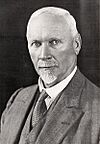 |
Jan Christiaan Smuts (1870–1950) MP for Wonderboom, Transvaal Province |
3 September 1919 | 30 June 1924 | 4 years, 301 days | — (2nd) 1920 (3rd) 1921 (4th) |
South African Party | Smuts I–II |
| He tried to help make peace between Britain and Irish nationalists. He faced a workers' strike called the Rand Rebellion. He lost the 1924 election and later returned as Deputy Prime Minister. | ||||||||
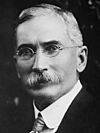 |
James Barry Munnik Hertzog (1866–1942) MP for Smithfield, Orange Free State Province |
30 June 1924 | 5 September 1939 | 15 years, 67 days | 1924 (5th) 1929 (6th) 1933 (7th) 1938 (8th) |
National Party (until 1934) United Party (from 1934) |
Hertzog I–II–III–IV | |
| 3 | ||||||||
| He made Afrikaans an official language. He also introduced a new national flag. White women gained the right to vote during his term. He removed Black voters from the main voters' list. He resigned when his party disagreed about joining World War II. | ||||||||
| (2) | 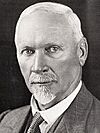 |
Jan Christiaan Smuts (1870–1950) MP for Standerton, Transvaal Province |
5 September 1939 | 4 June 1948 | 8 years, 273 days | — (8th) 1943 (9th) |
United Party | Smuts III |
| He led South Africa during World War II. He helped create the United Nations. He lost the 1948 election to the National Party. | ||||||||
| 4 | 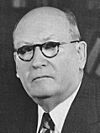 |
Daniël François Malan (1874–1959) MP for Piketberg, Cape Province |
4 June 1948 | 30 November 1954 | 6 years, 179 days | 1948 (10th) 1953 (11th) |
National Party | Malan I–II |
| His party came to power promising to introduce apartheid. He began putting in place the strict policy of racial segregation. | ||||||||
| 5 | 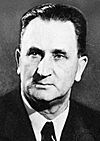 |
Johannes Gerhardus Strijdom (1893–1958) MP for Waterberg, Transvaal Province |
30 November 1954 | 24 August 1958 | 3 years, 267 days | — (11th) 1958 (12th) |
National Party | Strydom |
| He wanted South Africa to be less connected to the United Kingdom. He removed Coloured voters from the common voters' list. He died while still in office. | ||||||||
| 6 | 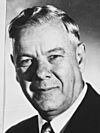 |
Hendrik Frensch Verwoerd (1901–1966) MP for Heidelberg, Transvaal Province |
2 September 1958 | 6 September 1966 | 8 years, 4 days | — (12th) 1961 (13th) 1966 (14th) |
National Party | Verwoerd I–II |
| He declared South Africa a Republic in 1961. He started the bantustan programme, creating separate areas for Black people. He was assassinated while in office. | ||||||||
| 7 | 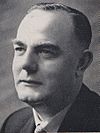 |
Balthazar Johannes Vorster (1915–1983) MP for Nigel, Transvaal Province |
13 September 1966 | 2 October 1978 | 12 years, 19 days | — (14th) 1970 (15th) 1974 (16th) 1977) |
National Party | Vorster I–II–III |
| The South African Border War became a full conflict during his time. He tried to improve relations with other African countries. He resigned from his position. | ||||||||
| 8 | 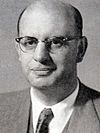 |
Pieter Willem Botha (1916–2006) MP for George, Cape Province |
9 October 1978 | 14 September 1984 | 5 years, 341 days | — (17th) 1981 (18th) 1984 (19th) |
National Party | P. W. Botha |
| He improved relations with Western countries. He introduced a new constitution in 1983. This created the Tricameral Parliament, which gave some political voice to Coloured and Indian people. Black people were still excluded. He started a secret nuclear weapons program. He abolished the Prime Minister position in 1984 and became the executive State President. | ||||||||
Timeline of South African Prime Ministers

Related Government Roles
- State President of South Africa
- President of South Africa
- Governor-General of South Africa



